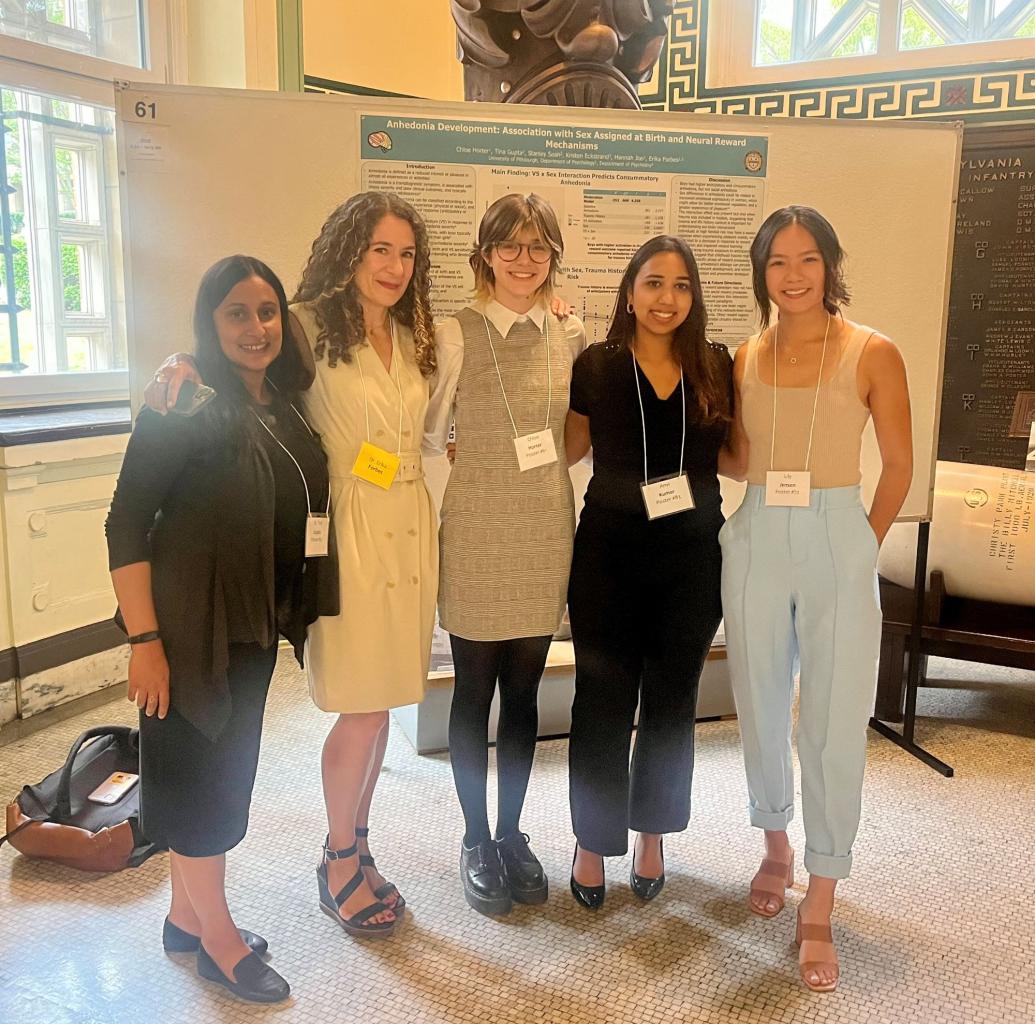
The University of Pittsburgh Department of Psychiatry's Annual Research Day highlights the findings of our talented faculty, trainees and staff, and offers ample opportunities for learning, generating new ideas, networking, and forming collaborative relationships. Several members of our lab showed their hard work and presented the research projects they were involved in.
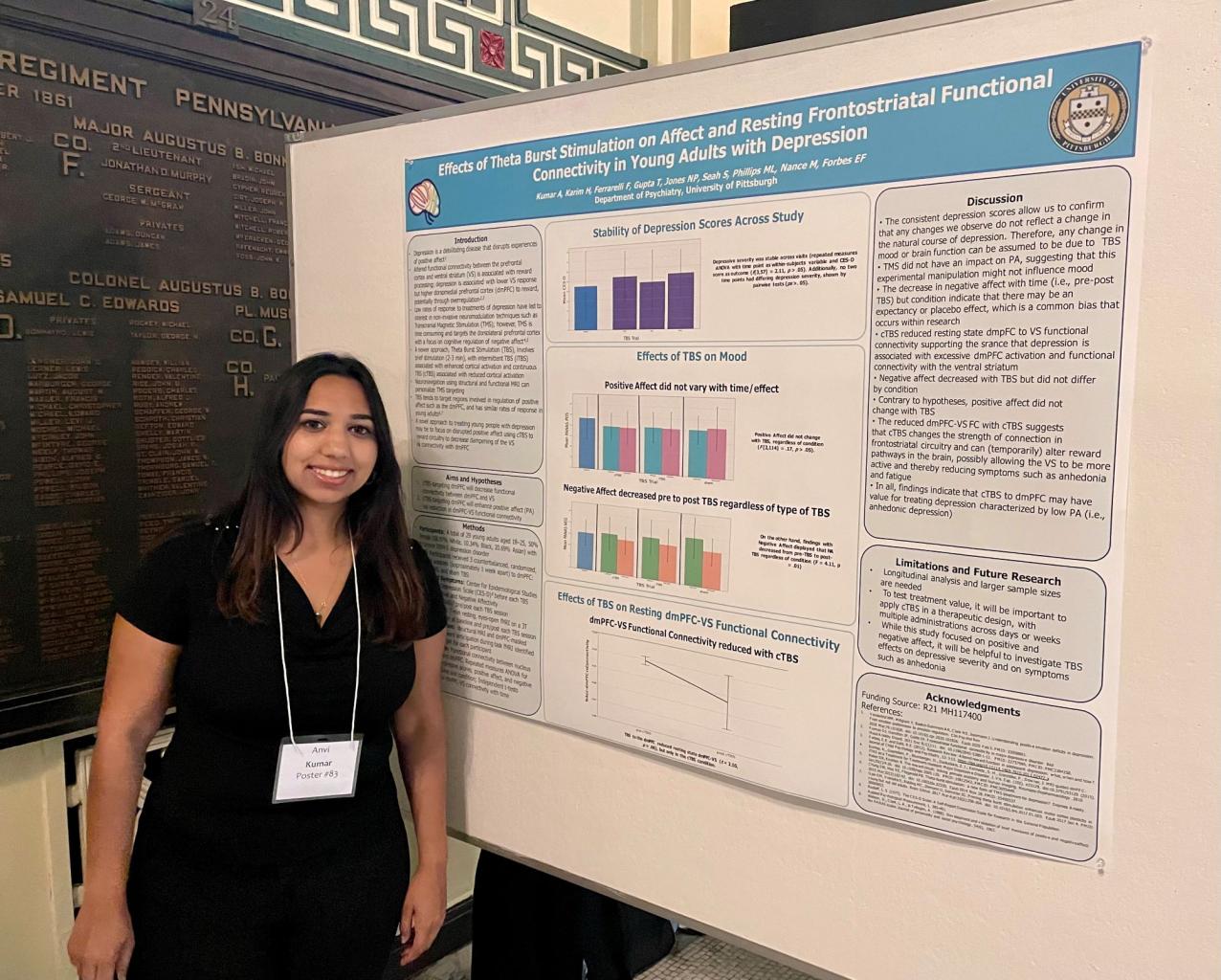
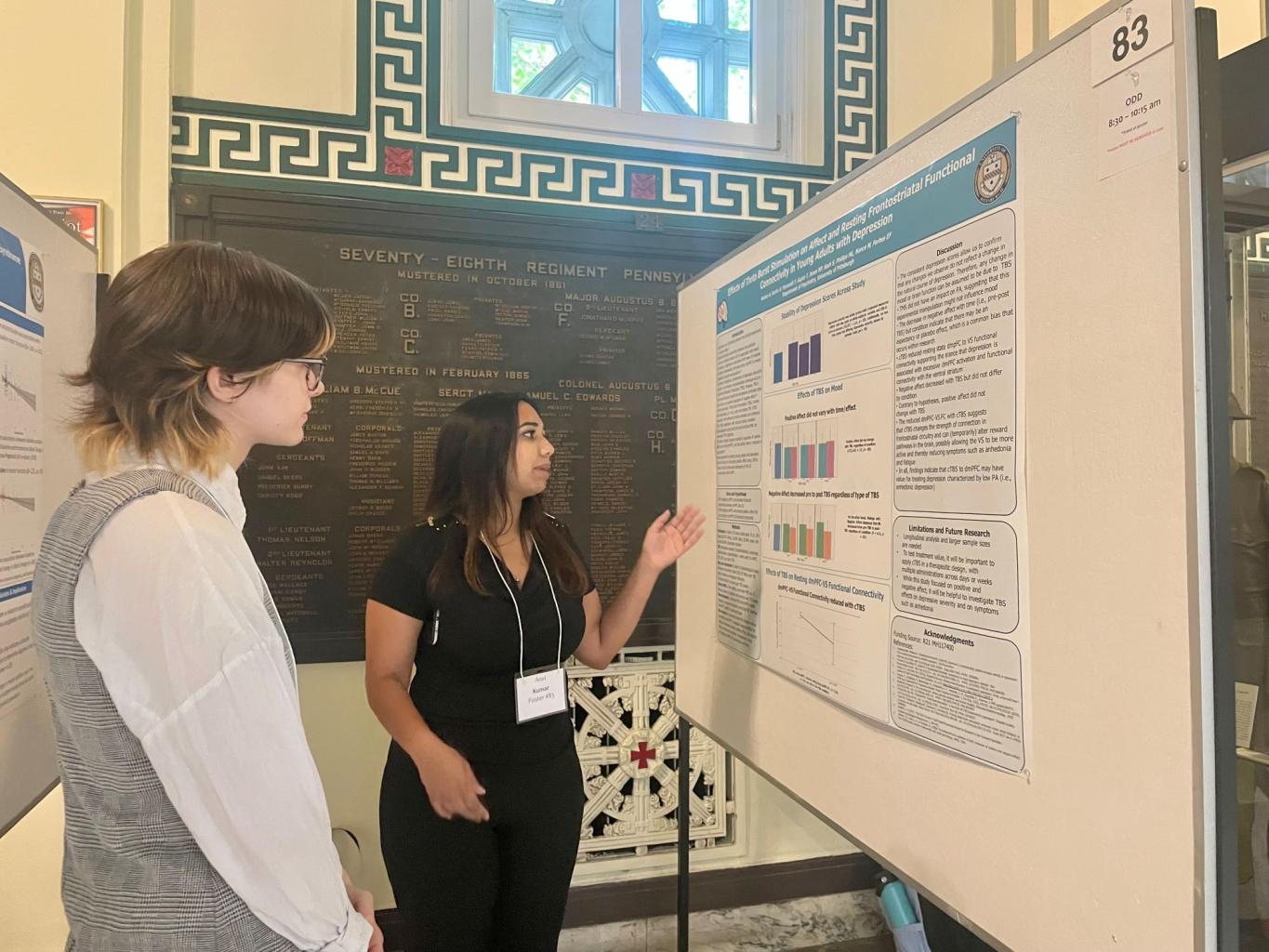
Anvi Kumar, Research Specialist, presented research on the 'Effects of Theta Burst Stimulation on Affect and Resting Frontostriatal Functional Connectivity in Young Adults with Depression'.
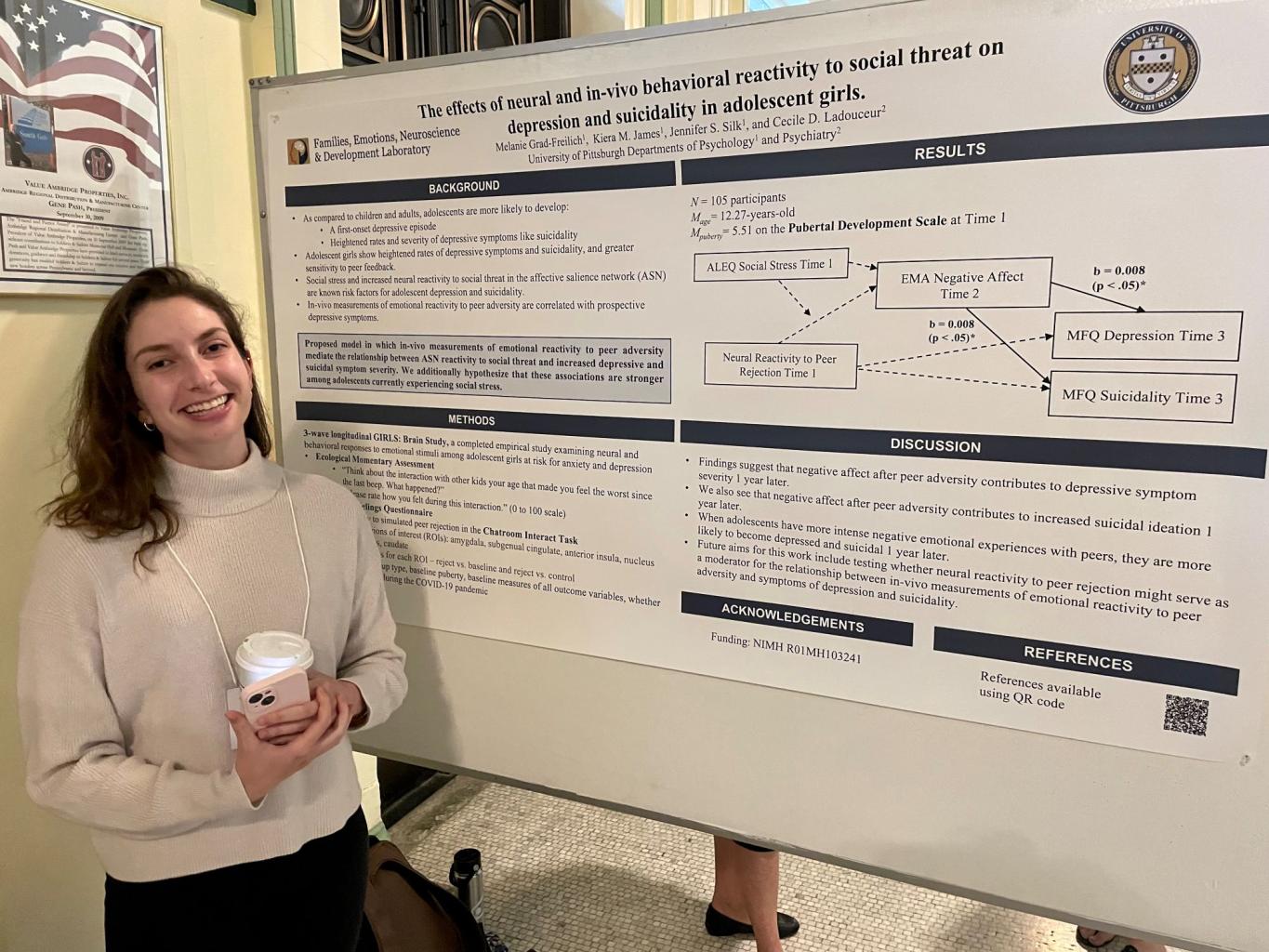
Melanie Grad-Freilich, University of Pittsburgh graduate student, presented her findings on the effects of neural and in-vivo behavioral reactivity to social threat on depression and suicidality in adolescent girls.
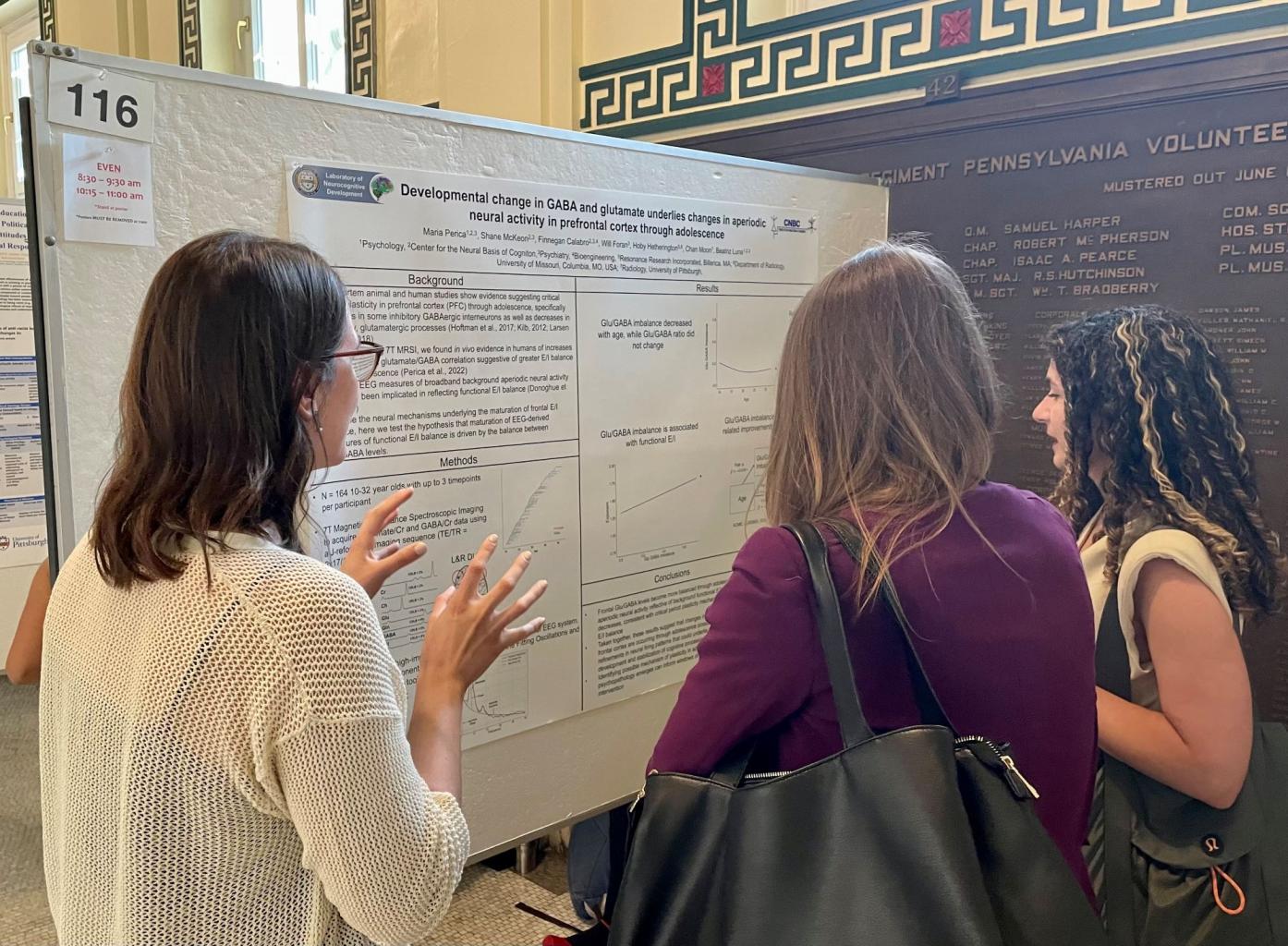
Maria Perica, University of Pittsburgh graduate student. is shown above explaining her research on how developmental change in GABA and glutamate underlies changes in aperiodic neural activity in the prefrontal cortex through adolescence.
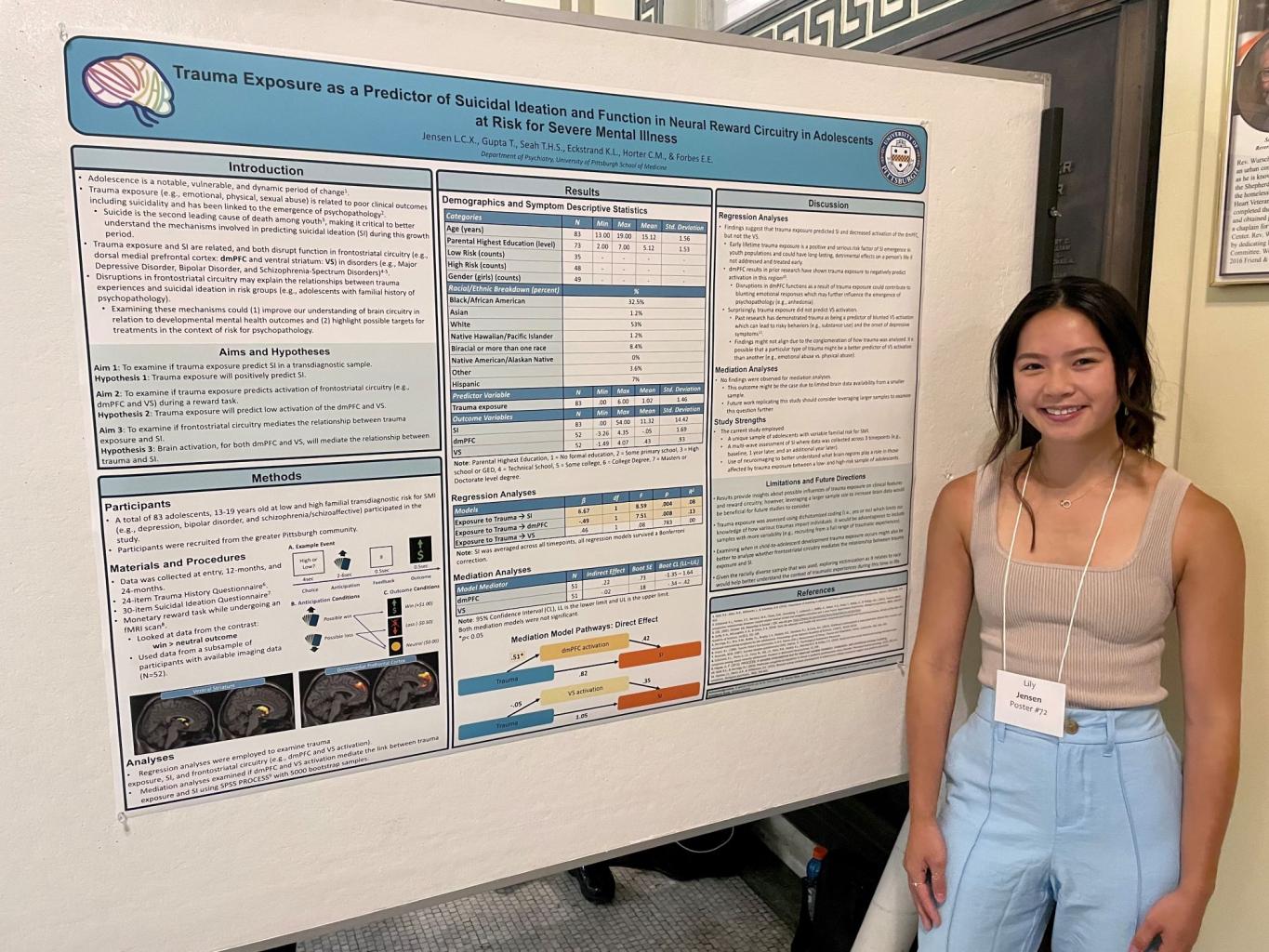
Lily Jensen, Research Specialist, presented 'Trauma Exposure as a Predictor of Suicidal Ideation and Function in Neural Reward Circuitry in Adolescents at Risk for Severe Mental Illness.'
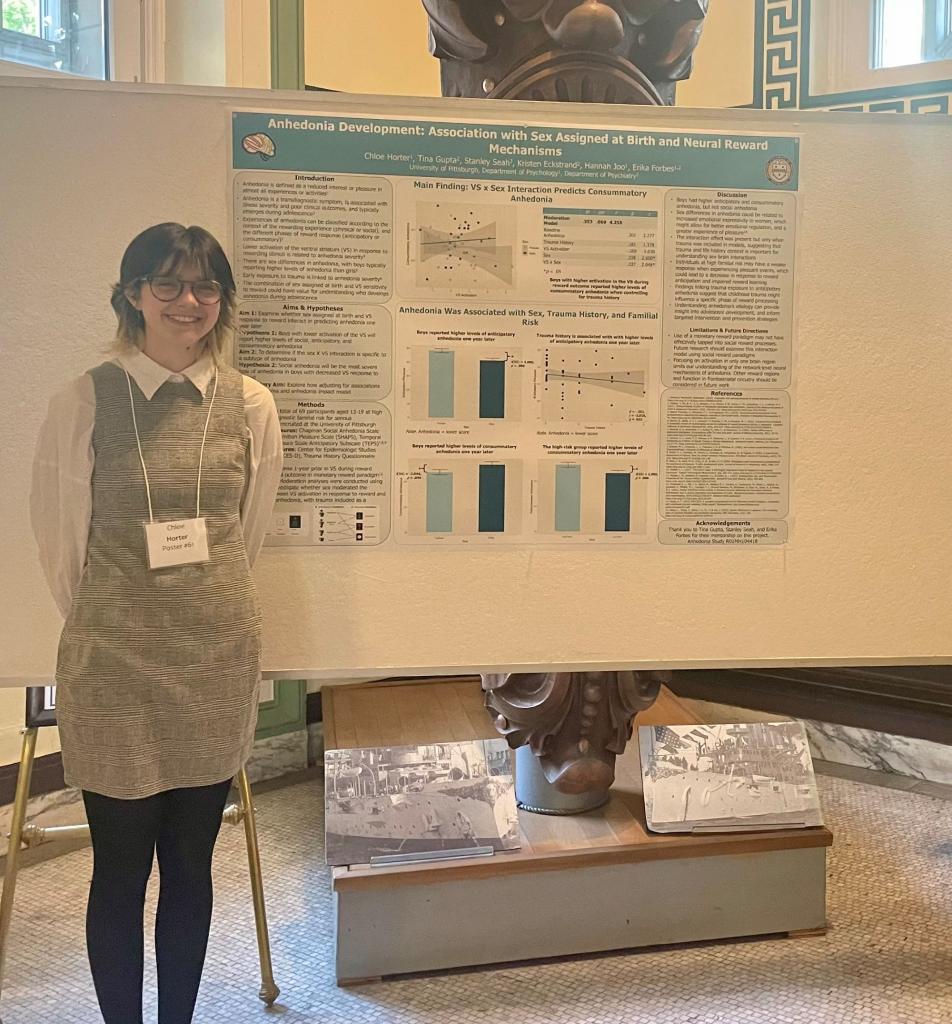
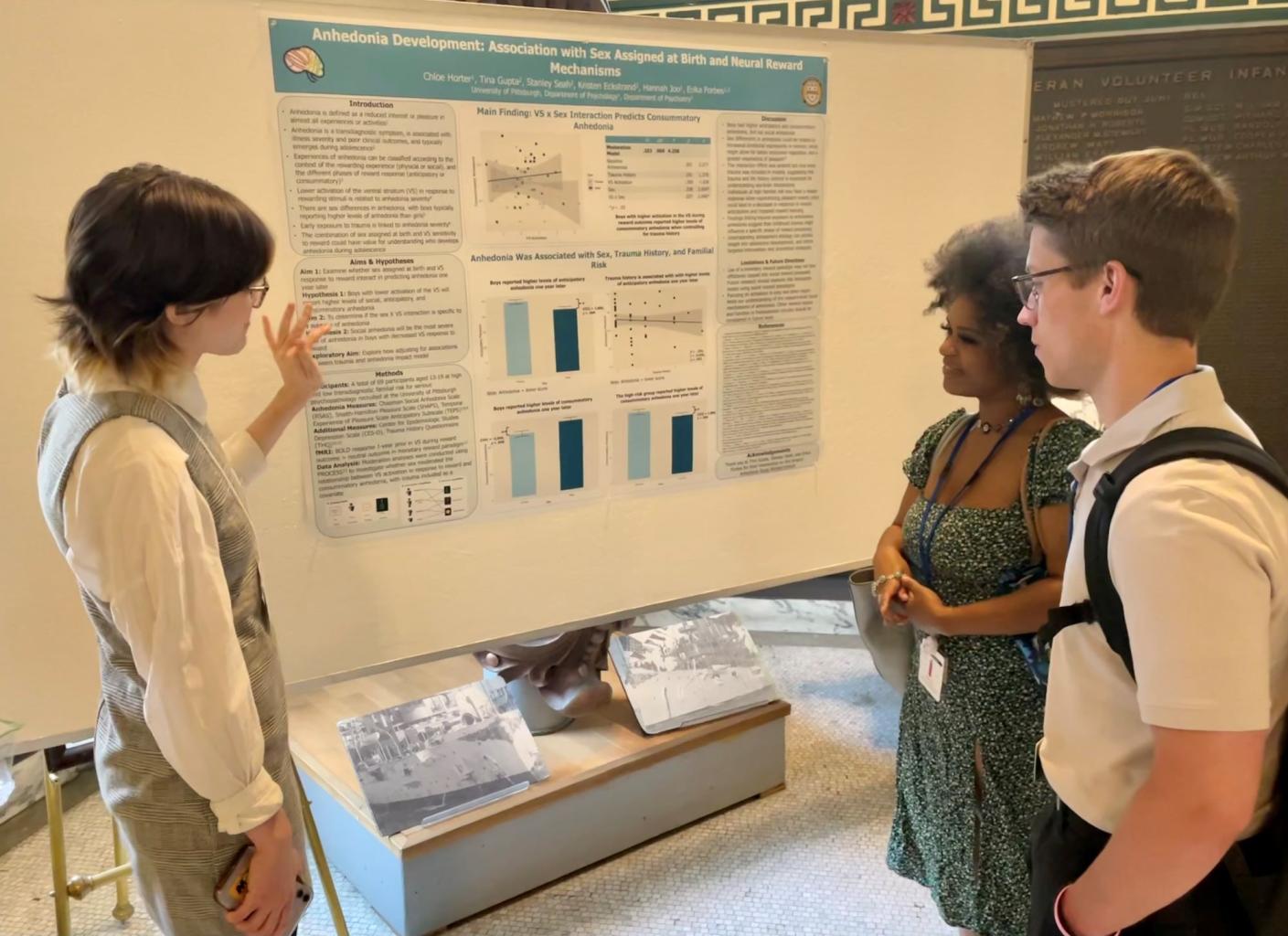
Chloe Horter, Research Associate, is shown above describing the methods used for the Anhedonia study, titled, 'Anhedonia Development: Association with Sex Assigned at Birthand Neural Reward Mechanisms.'

Dr. Stanley Seah, Postdoctoral Associate, presented his research on understanding suicide in sexual minority youth: neural reactivity to social feedback as a moderating influence.
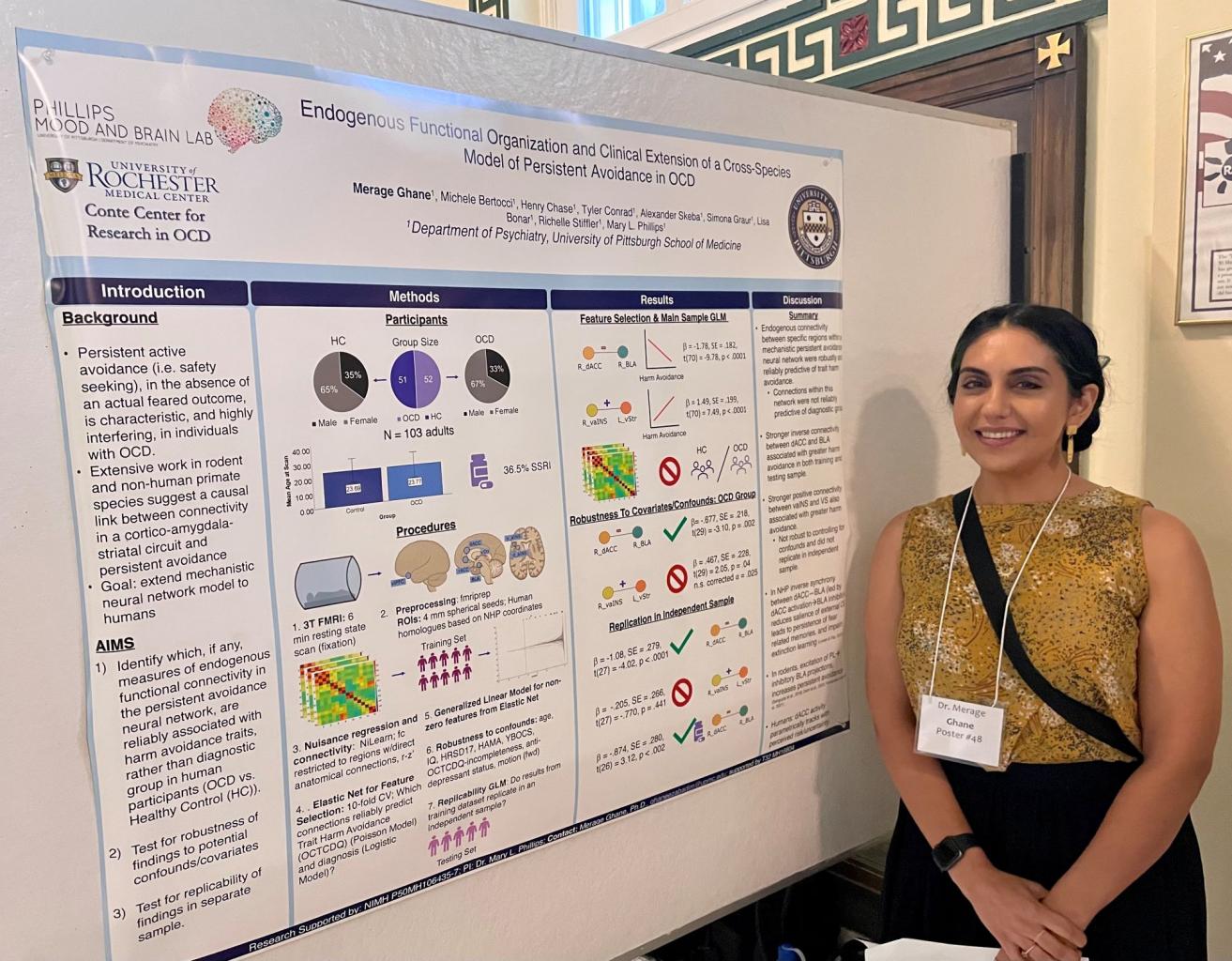
Dr. Merage Ghane-Ezabadi, Postdoctoral Associate, shared 'Endogenous Functional Organization and Clinicla Exension of a Cross-Species Model of Persistent Avoidance in OCD.'

Dr. Tina Gupta, Postdoctoral Fellow, presented interesting findings in research on the 'Trajectories of Anhedonia over Two Years in Adolescents at Transdiagnostic Risk for Severe Mental Illness: Group Patterns and Associations with Clinical Symptoms.'
Click the link to see details about our new research in the 2025 Annual Research Day.
